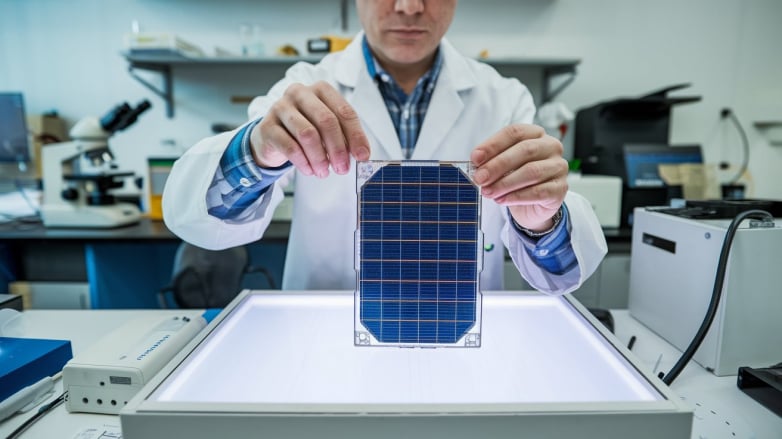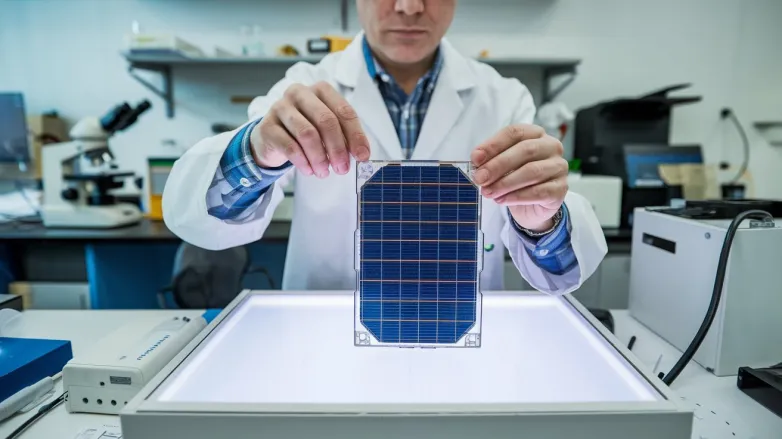Breakthrough HTL Boosts Perovskite Solar Cell Efficiency

Sep 19, 2024 08:56 AM ET
- Revolutionizing perovskite solar cells: researchers harness a lithium-free doping method, achieving 25.45% efficiency and enhancing stability for a brighter, greener future.

Researchers from China’s Northwestern Polytechnical University, The Hong Kong University of Science and Technology, and Spain’s Technical University of Madrid have developed a lithium-free doping strategy for spiro-OMeTAD-based hole transport layers (HTLs) in perovskite solar cells. Their novel approach achieved a remarkable efficiency of 25.45% and addresses the limitations associated with traditional lithium salt doping, which requires extensive air-oxidation and can compromise device performance.
The new method employs Eu(TFSI) for doping, enabling the spiro-OMeTAD HTLs to achieve high conductivity and an ideal work function without the need for time-consuming post-treatment. This advancement not only enhances the efficiency but also improves stability, thereby making perovskite solar cells more viable for commercial use. The team’s design includes a glass substrate, titanium oxide electron transport layer, perovskite absorber, and the innovative HTL, marking a significant step forward in solar technology.
How does the new lithium-free doping strategy improve perovskite solar cell efficiency?
– Lithium Salt Doping Limitations: Traditional lithium salt doping relies on extensive air-oxidation processes that can degrade the performance and stability of perovskite solar cells. The lithium-free doping strategy eliminates these limitations, resulting in better optimized HTLs.
– Introduction of Eu(TFSI): The use of europium bis(trifluoromethanesulfonyl)imide (Eu(TFSI)) has been pivotal in enhancing the properties of the spiro-OMeTAD HTLs. This novel dopant facilitates increased charge mobility and better electronic properties without necessitating additional processing steps that can introduce defects or inconsistencies.
– Enhanced Conductivity: The incorporation of Eu(TFSI) leads to significantly improved electrical conductivity of the HTLs. This enhanced conductivity allows for more efficient charge transport within the solar cell, contributing directly to the observed increase in efficiency.
– Ideal Work Function: The doping strategy successfully tunes the work function of the spiro-OMeTAD HTLs. An optimal work function is critical for effective energy level alignment between the HTL and the perovskite absorber, resulting in improved charge extraction and reduced recombination losses.
– Simplified Manufacturing Process: By removing the reliance on lithium salt and the associated air-oxidation process, the new doping strategy simplifies the manufacturing process of perovskite solar cells. This could lead to more streamlined production methods, reducing costs and making it easier to scale up.
– Stability and Longevity: The improved stability of devices using the novel doping strategy means that perovskite solar cells can better withstand environmental factors such as moisture and temperature fluctuations. This characteristic is crucial for commercial viability, as it enhances the lifespan of solar panels.
– Cross-Disciplinary Collaboration: The collaboration among researchers from China, Hong Kong, and Spain highlights the global effort in advancing solar technology, emphasizing the importance of shared knowledge in tackling complex engineering challenges.
– Implications for Market Adoption: The successful demonstration of a high-efficiency, more stable perovskite solar cell using this innovative doping strategy could accelerate the market adoption of perovskite technologies, challenging traditional silicon-based systems and diversifying the renewable energy landscape.
– Future Research Directions: This breakthrough opens avenues for further research into alternative doping materials and their mechanisms. Investigating other compounds and their interactions with spiro-OMeTAD may yield additional gains in efficiency and stability for next-generation solar cells.
– Environmental Considerations: With a focus on reducing complicated doping processes and enhancing material stability, this approach aligns with the increasing demand for environmentally-friendly production methods in the renewable energy sector.
SOLAR DIRECTORY
Solar Installers, Manufacturers




